During the late summer and early fall, you can find goldenrod (Solidago sp.) everywhere. There are dozens of types of goldenrods that grow in the piedmont of North Carolina. I’ve spent the last few weeks trying to find and properly identify as many species as I can. Unless otherwise noted, all of these plants can be found on the trails in Morrisville.
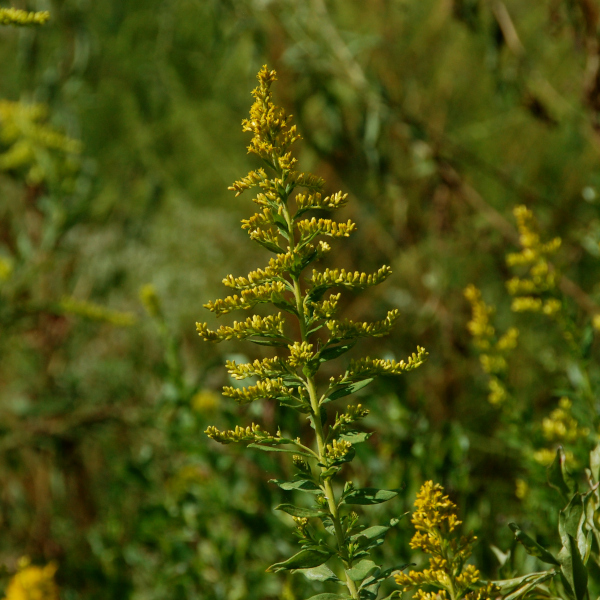
Tall Goldenrod, Solidago altissima– tall, flowers in pyramid shape, leaves are rough hairy on both sides. The leaves are more elliptical than Solidago gigantea. This goldenrod typically has galls.
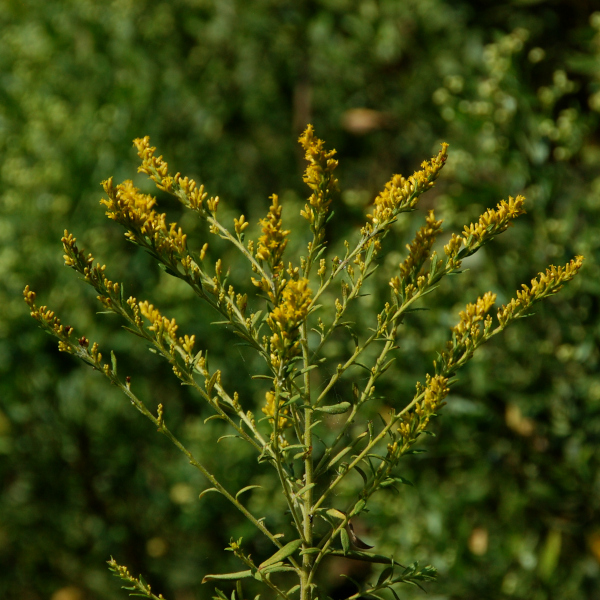
Giant Goldenrod, Solidago gigantea– tall, flowers in spreading branches, leaves are slightly rough on the top. Often seen growing next to Solidago altisssima. The leaves are more narrow than Solidago altissima.
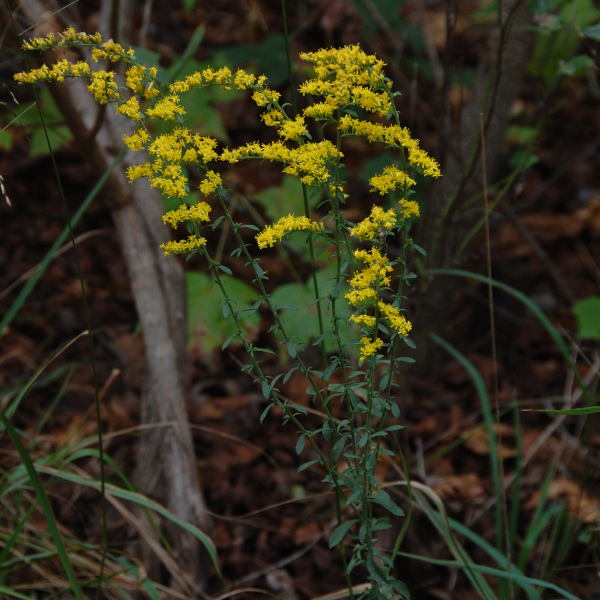
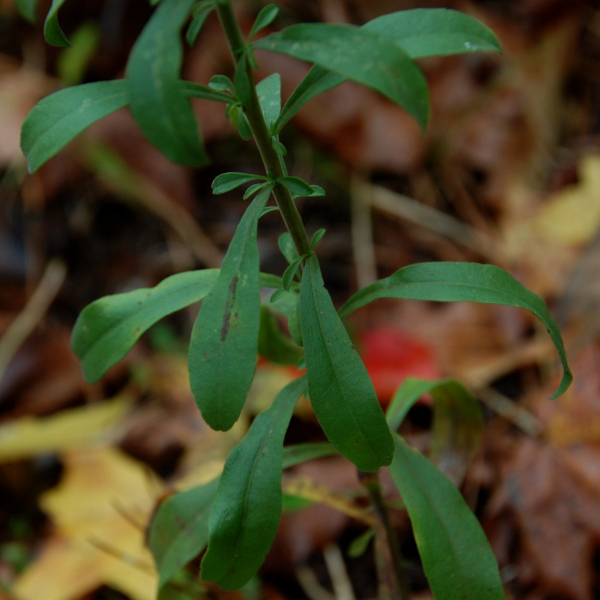
Eastern Gray Goldenrod, Solidago nemoralis– spoon shaped leaves that are rough.
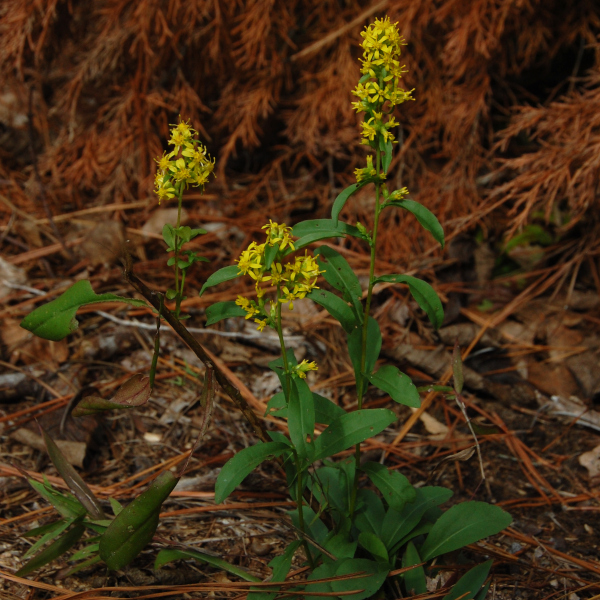
Slender Goldenrod, Solidago erecta– smooth stem and leaves, basal leaves are oval and toothed. The individual flowers are large compared to other goldenrod species.
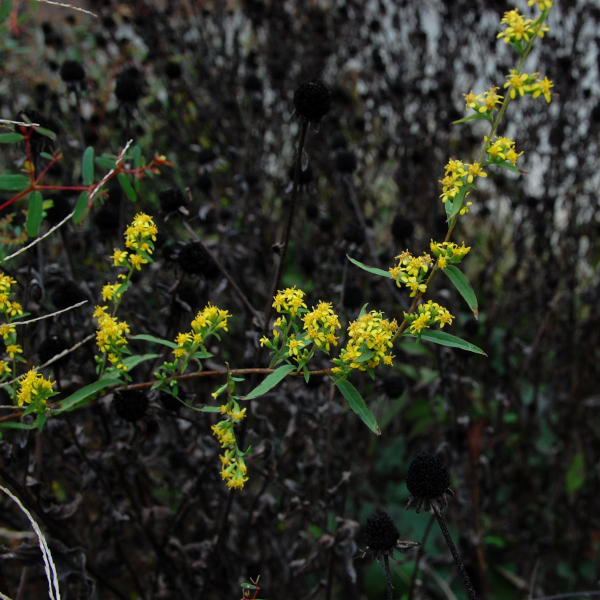
Bluestem Goldenrod, Solidago caesia– flowers in between the leaves of the middle and upper stem.
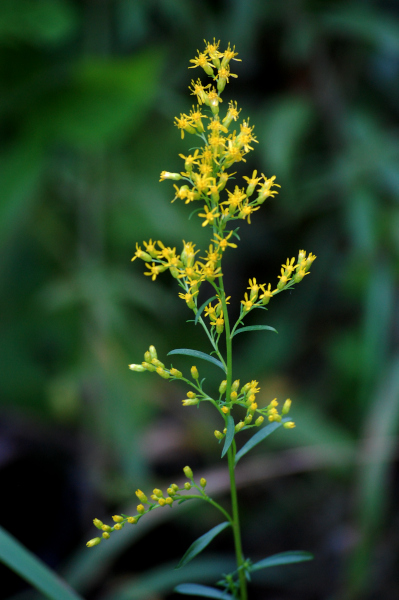
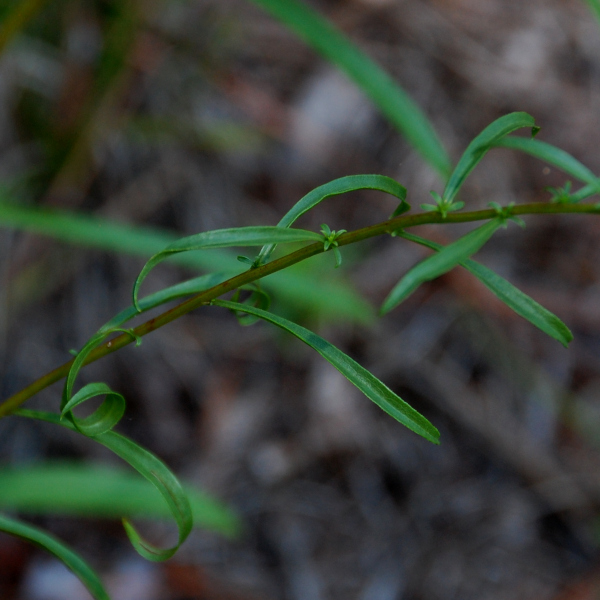
Pineywoods Goldenrod, Solidago pinetorum– very long, narrow leaves.
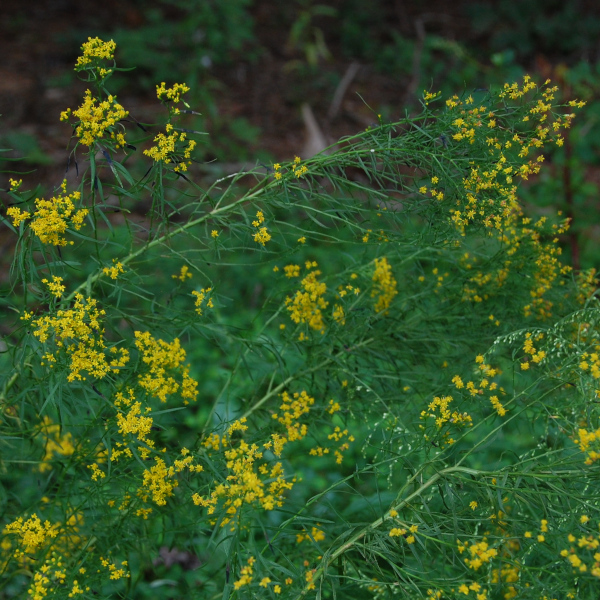
Slender Goldentop, Euthamia caroliniana– grass-like leaves. Sometimes called Slender Flattop Goldenrod and was once classified as Solidago.
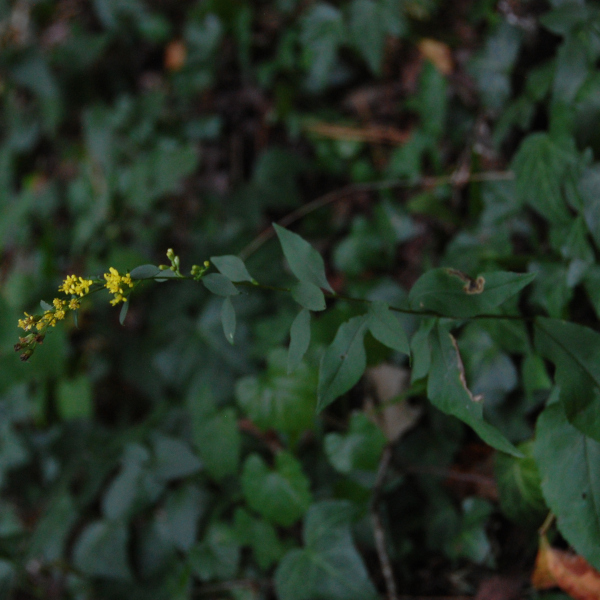
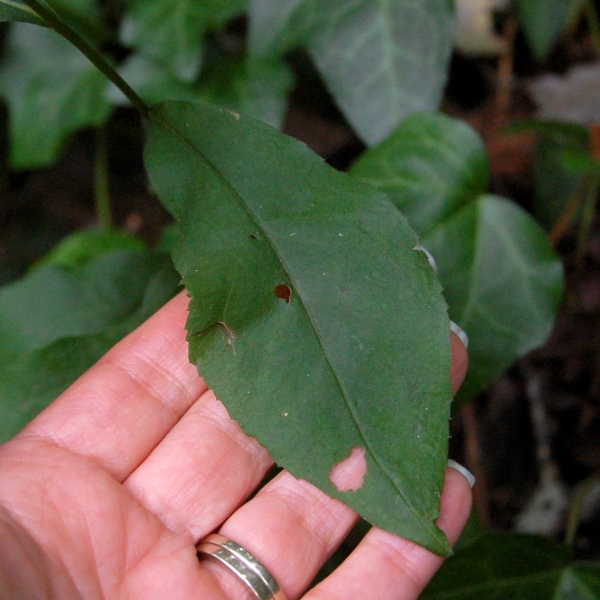
Zigzag Goldenrod, Solidago flexicaulis (Bond Park)- round leaves get bigger closer to the ground, stem zigzags.
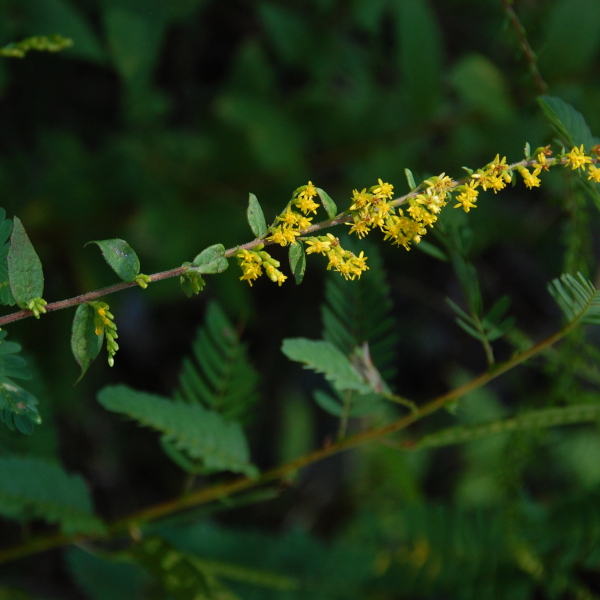
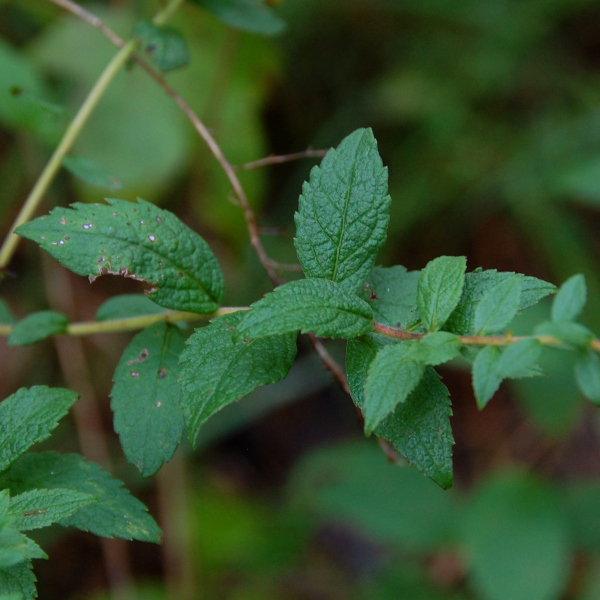
Hackberry-leaf Goldenrod, Solidago rugosa var. celtidifolia– wrinkled leaves that get smaller closer to the flowers. The leaves are ovate (have a rounded base). Solidago rugosa var. aspera has elliptic leaves (leaves with a more pointed base).
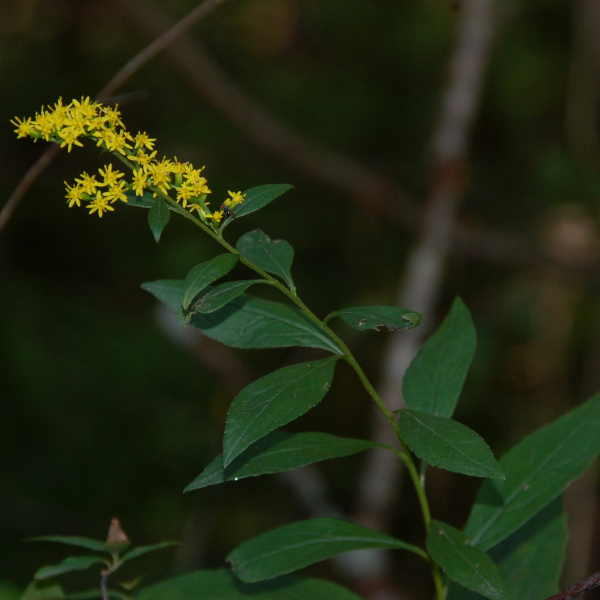
Elmleaf Goldenrod, Solidago ulmifolia (American Tobacco Trail)- wrinkled leaves, not hairy, straight stem.
More plants will be added to the list as positive identifications are made.
Which goldenrods have you seen?